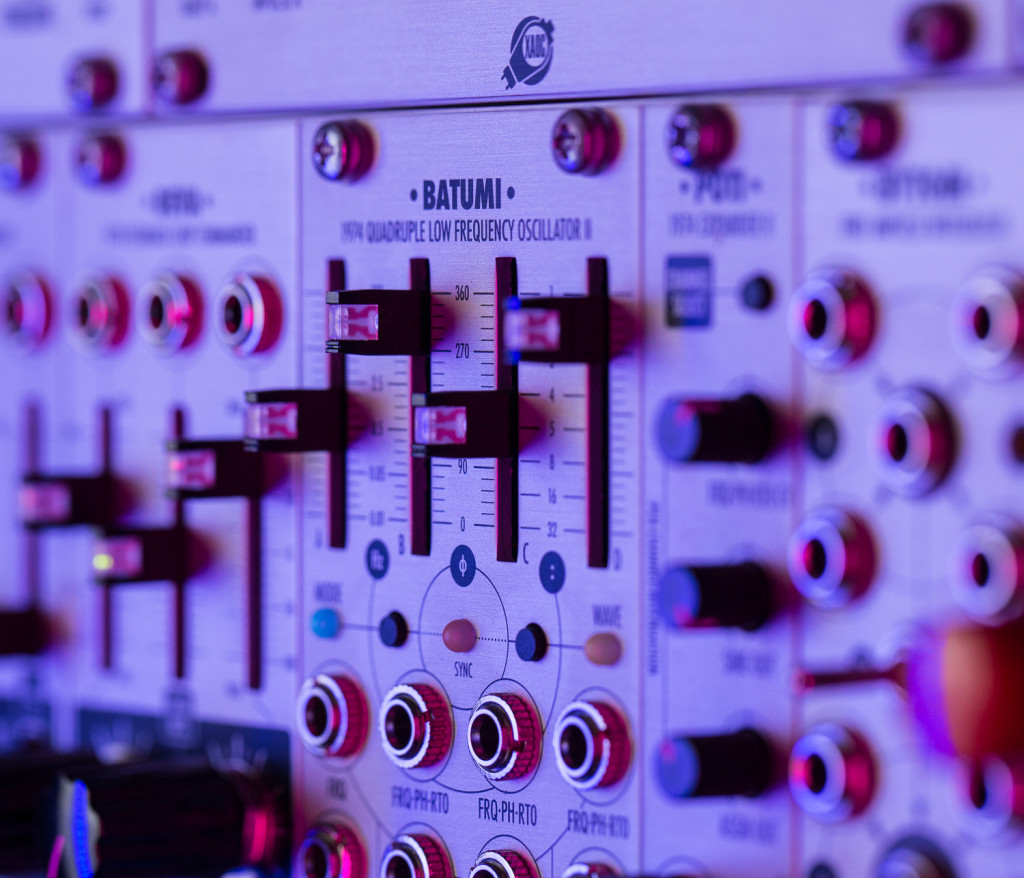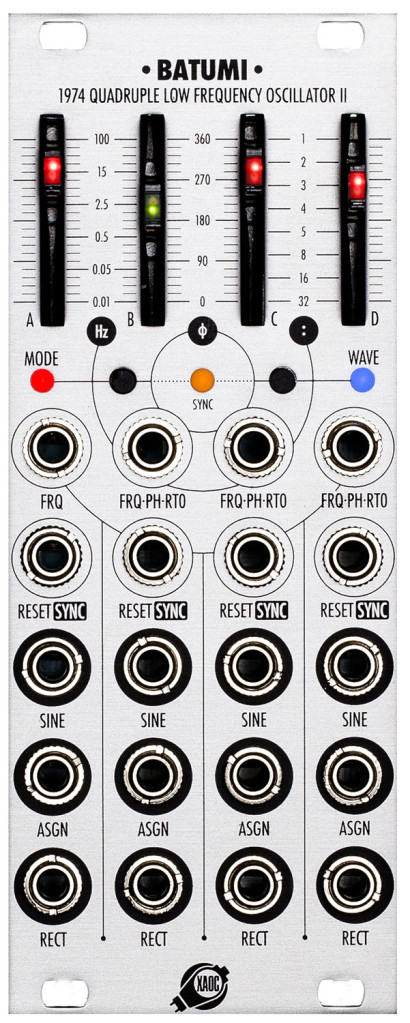What do you do if you make one of the best modulation modules out there? Make it better. That’s the Batumi II and the optional Poti II expander, a complete redesign with more features in the same space.

The major advantage of buying hardware from original designers like Xaoc Devices is that they can continue to respond to feedback and make the hardware better. There’s also now a strong disincentive to release open source hardware since instead of participating in an ecosystem, you’re effectively handing over plans for others to make your product cheaply without doing their own R&D. I’d say more but the crack Legal Department on floor 13 of CDM Tower has advised me that it’s better not to and – I’d rather talk about Batumi II.
And Batumi II – part of the 1974 line from Xaoc Devices – looks very, very cool:

- 4 LFOs
- Redesigned from scratch: all new hardware and software
- New waveforms for the assign output, including random
- New frequency multiplication mode
- Wide frequency range, well into audio rate
- 1V/octave tracking – so the same module doubles as four VCOs with multiple waveforms
- In phrase/divide/mult modes, the random waves at the ASGN output follow the leader/A channel
You get all of this in 10HP – now with all the features that previously required the expander module. So that’s it, 330EUR MSRP and Batumi II packs nearly everything the Batumi and expander did in a compact space. There are a lot of LFO modules out there, but having this much modulation from a single module with this much functionality is really special.
Now, you can still add the 90EUR Poti II expander for more:

- Per-channel input and output attenuation for SINE and ASSGN outs
- Multi-destination inputs for sine wavefolding
- Per-channel shape modulation with switchable destination (wave folding, shape switching, PWM)
- Each channel can independently be assigned a destination, and has its own waveform switch
- Store settings when you power cycle
- LED shows the discrepancy between the stored setting and the current pot position (as you turn the pot to the stored value, that is – takeover)
- 4 HP
+90/-50mA power draw on Batumi II itself, and then +10/0mA draw of the expander from Batumi II.
They’ve also added some clarification on what the main module does versus the expansion:
We have managed to incorporate the features of the original expander into Batumi II (sync mode switching and assign waveform selection) without changing the size of the module which opened up new possibilities for the new optional expander. The Poti II expander for Batumi II adds multi destination inputs for sine wavefolding, assign output waveform selection or rectangle pulse modulation with the destination set for each channel independently. Poti II also features frequency input attenuation as well as sine and assign output attenuation. All adjustments may be performed separately for each individual channel or for all channels simultaneously.
This isn’t a review as I haven’t used the module yet, but I talked to Lukasz from Xaoc about the design. The extra functionality of the expander looks great to me, but I think it’s notable that you can get everything out of the main module if you’re tight on space. And the from-scratch rewrite promises to be both more solid, with a wider output range and more features. “We really wanted to make Batumi II as robust as possible, so it wasn’t just a matter of writing new code for the old module,” Lukasz tells CDM.
More on this soon, so let us know if you’ve got questions!
There’s a lot of great stuff from Xaoc: